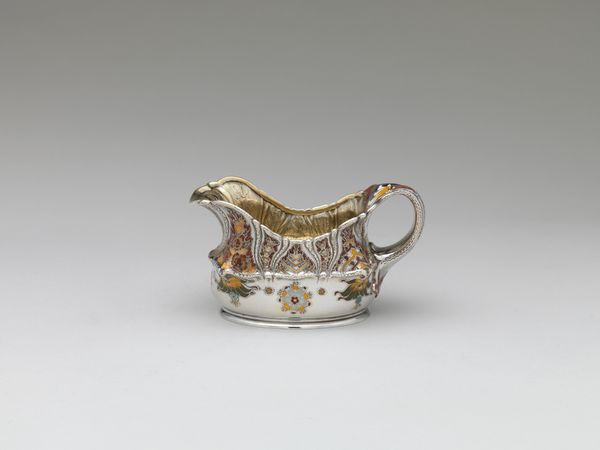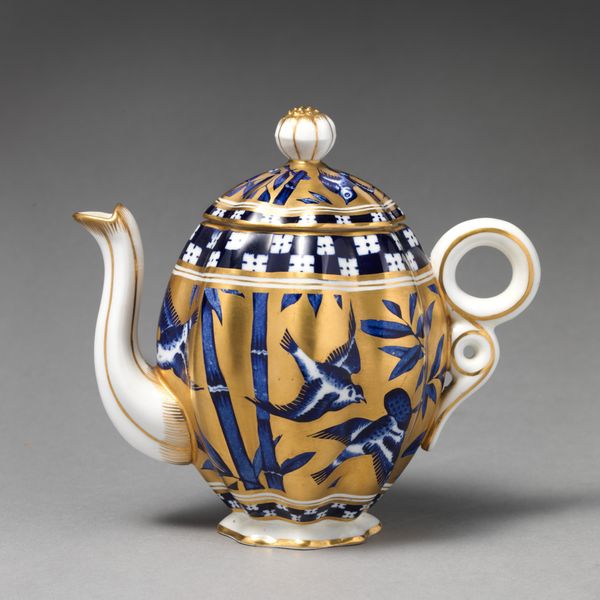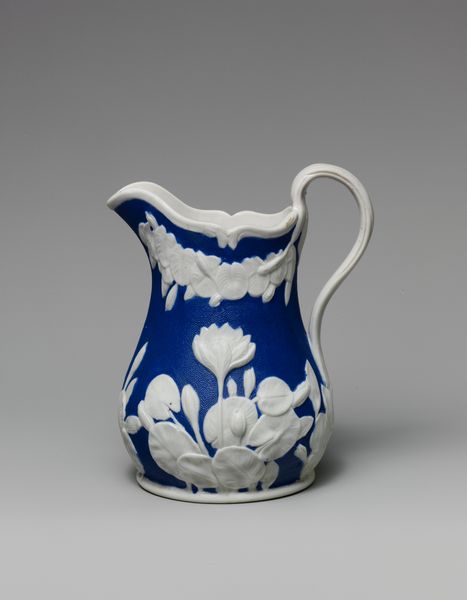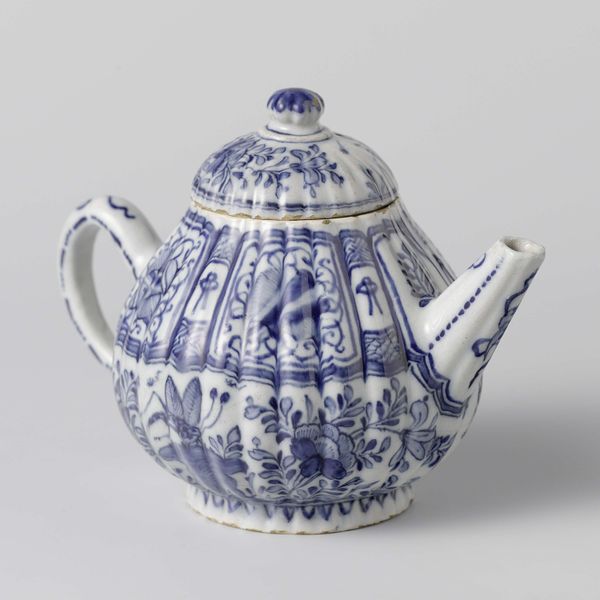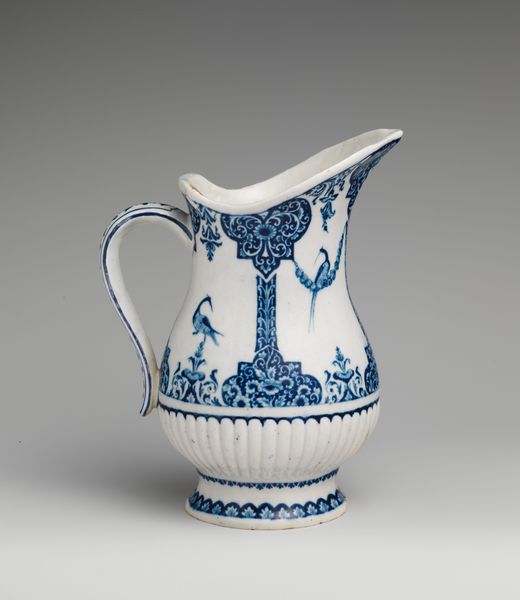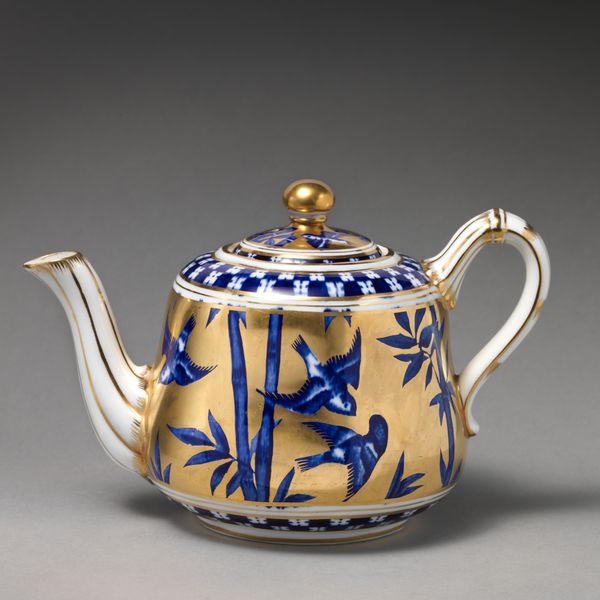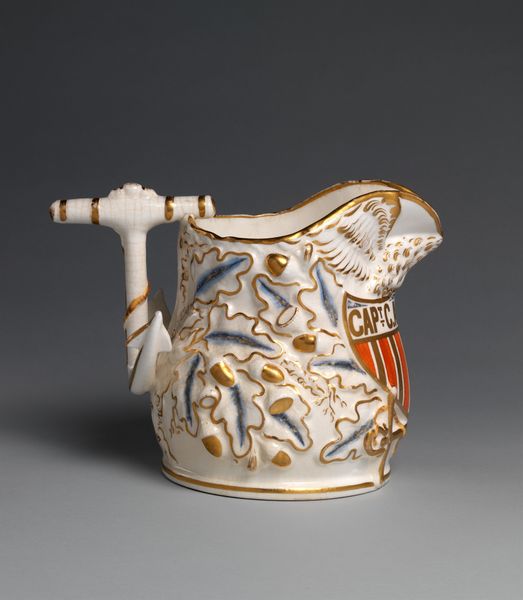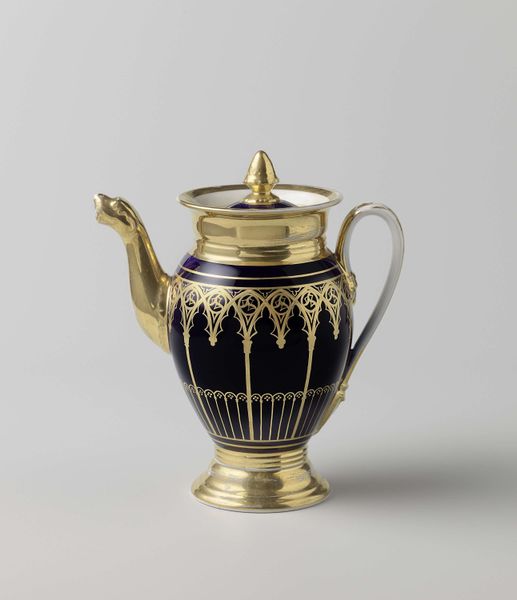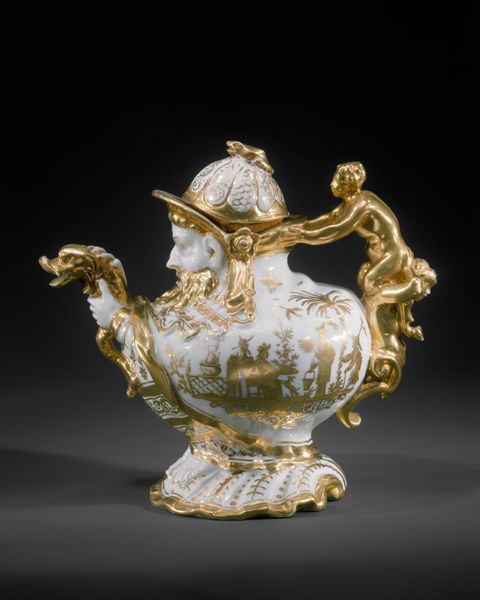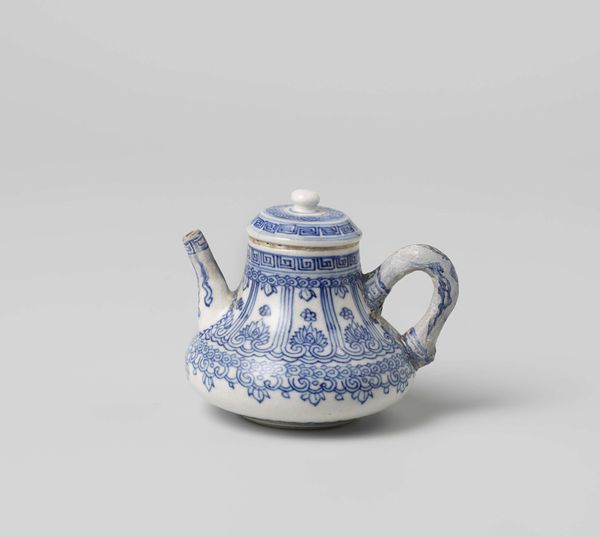
ceramic
#
ceramic
#
decorative-art
#
rococo
Dimensions: height 7.4 cm, diameter 8.2 cm
Copyright: Rijks Museum: Open Domain
Editor: Here we have a porcelain milk jug made by Porzellanmanufaktur Frankenthal, circa 1765-1770. I find the combination of vertical stripes and floral details charming. What visual language do you see in this piece? Curator: I see a fascinating blend of rigid order and organic freedom. The vertical stripes, alternately bold and delicate, create a visual rhythm. Do you notice how the floral patterns, rendered in blue and gold, soften this rigidity, suggesting a world where control and nature coexist? Editor: That’s a good point, yes. I can see how the floral pattern is working against the stripes. The stripes, though decorative, are linear, modern...the opposite of floral details, which are curvilinear, and flowing. Is there something about the time that explains the blend? Curator: Precisely! The Rococo style, to which this jug belongs, was obsessed with the interplay of opposites: formality and playfulness, opulence and lightness. The jug is domestic but is elevated by these materials and stylistic applications. Porcelain itself, particularly in the 18th century, was a symbol of status, wasn’t it? This milk jug thus becomes more than just a vessel; it embodies social aspirations and the refined sensibilities of its time. Editor: I’d not thought about it in terms of social aspirations...So it reflects a desire for refinement among a certain class? Curator: Absolutely. Every carefully chosen element – the gilding, the floral motifs, even the shape – contributes to a narrative of elegance and taste. Editor: Thank you for pointing out those tensions between order and nature in its historical context, I can see more of its meaning now. Curator: And I am refreshed to consider a domestic object's intimate symbolic link to larger societal values.
Comments
No comments
Be the first to comment and join the conversation on the ultimate creative platform.

